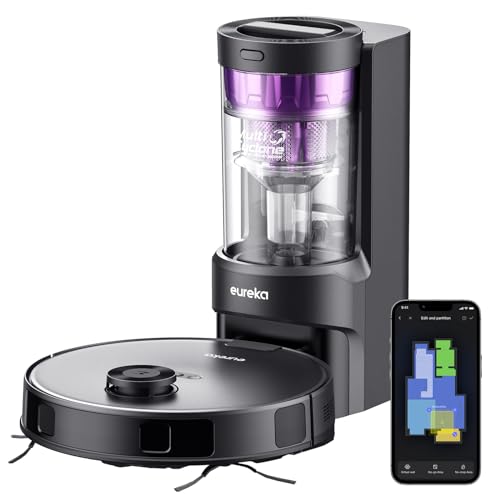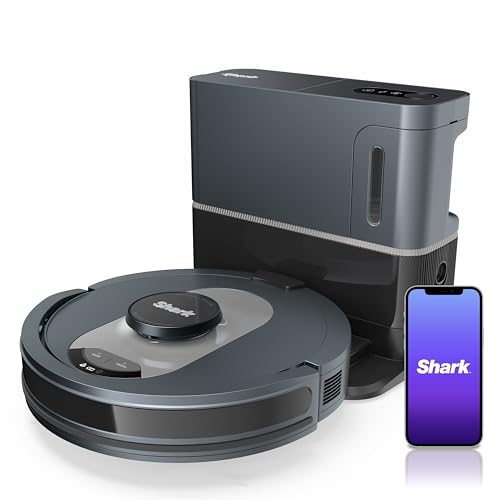You'll Never Guess This Robot Vacuum Bagless's Tricks
페이지 정보
작성자 Jina Gooch 작성일24-08-01 02:00 조회78회 댓글0건관련링크
본문
 Robot Vacuum Bagless - How Do Robot Vacuums Work?
Robot Vacuum Bagless - How Do Robot Vacuums Work?Robot vacuums will not take a significant chunk of your day to clean your home. They can be programmed to run regular cleaning intervals, even when you're not at your home.
They have self-emptying bins as well as some double as automated mop cleaners. However, they are costly.
Features
Robot vacuums can be amazing machines. When programmed with the right settings, they will navigate their way through your home, staying clear of furniture and cords and clean every inch of your floor. How do these robots know what to do and where to go? Like an ant living in its colony, a robot relies on a range of sensors to understand the world around it.
Most basic robot vacuums have downward-facing sensors that allow it to avoid obstacles. The best models could also have forward-facing sensors which enable them to map rooms and identify furniture to provide cleaner and more precise cleaning.
The latest models have even more advanced features, such as dirt sensing (which analyses the level of dirt and will prompt the machine to mop again if needed) and "freo mopping technology (which automatically adjusts the pressure depending on the floor material, applying a higher force for tile and a lesser force for hardwood, for instance).
The majority of robot vacuums come with cliff sensors that prevent them from falling down steps. They work by bouncing infra-red light off objects and measuring the distance between them and the bottom of the robot. If the sensor detects a sudden decrease in distance, it is aware that it's nearing the threshold and will reverse off.
 Many robots are able to not just navigate your home, but also sweep and mop the floors in one go. Depending on the model you choose, you may be able to manually wet the mop before attaching it to the bot, or it may include a built-in tank of water which can be activated with pressing a button.
Many robots are able to not just navigate your home, but also sweep and mop the floors in one go. Depending on the model you choose, you may be able to manually wet the mop before attaching it to the bot, or it may include a built-in tank of water which can be activated with pressing a button.Based on the type of robot you choose, you can control it using an app on your smartphone or via voice command using Google Assistant. More advanced models have scheduling software that keep the track of your cleaning schedule and automatically stop and start at times that are compatible with your schedule. Some models have virtual walls that let you create a line for the robot around areas that you would like to keep it away from. This is especially useful if you have a pet or children who are notorious for causing messes.
Cost
The cheapest robot vacuum cleaners, which are typically the ones that don't have a bag and simply empty into bins, cost around $400. For the same amount is an advanced model that works with smart home systems and self-emptying. You can also choose models that are compatible with voice assistants, like Alexa and Google Assistant, which means you can control them with your voice.
The majority of robot vacuum cleaners today employ sensors and embedded motor controls to navigate through your home. Sensors are used to detect obstacles and walls, while motor controllers ensure the wheels are moving in the correct direction so that they don't end up hitting furniture or other objects. Some models use 360 LiDAR technology to precisely determine the size of the house and to navigate around it. These systems can help you save time and effort since they allow the robot to continue clean when it encounters an obstruction.
Optical sensors can be used to determine the type of surface on floors and other surfaces. They do this by bounces of infra-red light off the floor and determining average intensity of the return signal to determine the type of surface. The robot is able to adjust its speed, and other features, depending on whether it's on hardwood or carpet. Other sensors, like cliff sensors, can be used to stop the robot from falling off the stairs.
The most effective robotic vacuum cleaners can save you lots of time and effort because they can sweep your floors automatically, at an interval that is compatible with your daily routine. Some of these machines can even take care of your mopping and sweeping as well. There are some limitations on what robots can do. For example, they can be less effective in getting rid of pet hair and other debris from rugs that are thick and do not reach the corners of closets and drawers.
Cleaning your robot vacuum cleaner clean will extend its lifespan and help it perform better. Regular maintenance includes removing and disposing of the dustbin when it is full, and cleaning the rollers and side brushes and re-installing filters. You can track and modify cleaning schedules using an app included with all robots. Maintaining the app up-to-date is essential to ensure that it has the latest mapping information and other features.
Cleaning Schedules
Robots use mapping technology to create a map of your home, which can help them efficiently navigate and perform cleaning routines on a set timetable. Certain models let you create no-go zones. This means that certain areas are prohibited to the Next-gen Shark UR2500SR: AI Ultra Robot Vacuum. You can also use a mobile application or your voice to start a cleaning session. The app will also help you organize your cleaning schedule based on Efficient eufy RoboVac G40+: Your Ultimate Cleaning Companion! lifestyle.
While robotics have revolutionized household cleaning, they're still not 100% reliable. They work best in uncluttered rooms with clean floors or carpets that are low-pile. Carpets that are heavy-duty require more power and consumes the battery of the robot, leading to a shorter runtime. They might also be unable to access certain areas of your home or struggle to climb stairs. The good news is most robots will return to their original point and continue to clean even if they're interrupted.
The optical sensors that direct robots around your home are susceptible to dust and dirt, which can interfere with their performance. Therefore, it is essential to clean your robot's vacuum sensor on a regular basis using a slightly moist (not wet-dripping) melamine sponge. These steps will help ensure that your device is operating at its peak efficiency and extend its life.
Before starting a cleaning cycle, it's a good idea for you to remove any objects that could be in the way of your robot vacuum. This will stop the machine from damaging your furniture or causing damage to delicate items. You can also stop the robot from entering areas that are off-limits by closing a door or using magnetic boundary strips provided by some manufacturers.
It is important to keep your robot vacuum's dustbin empty, as full containers can slow down the vacuuming process. The dustbins of the majority of robot vacuums can be manually emptied. The more advanced models come with docking stations that automatically empty the compartment. In addition to prolonging the runtime of the vacuum, this feature will also reduce wear and tear on the motor and prolong its lifespan.
Maintenance
Robot vacuums are a great way to keep your home spotless with minimal effort, however they require regular maintenance to ensure their performance is at its best. Clogged brushes, sensors and filters can reduce the robot’s suction power. They can also result in costly repairs or replacements if not cleaned up properly. It's important to be aware that you can keep your robot cleaner in top condition by following a few easy cleaning steps.
The first step to keep a robot vacuum bagless is to empty the dustbin regularly. This is particularly important if you have pets in your home. It is also important to take the brush off and wash it thoroughly after every cleaning cycle. If you have a high-end robot vacuum, it could include a feature that automatically emptys its dust bin.
The next step is to clean the sensors on your robot vacuum. These are crucial for the machine's safety and navigation capabilities. To keep them from getting dirty, clean them using a microfiber cloth. Use a dry microfiber cloth since water can damage the sensor's protective cover. If you're unsure where the sensors on your robot are you can refer to the manual to get specific instructions.
Lastly, you should check for firmware updates and install them as soon as they are available. These updates often enhance the robot's performance, navigation capabilities and battery life. You can download these updates for free through the app store on your device.
If you're not sure of how to update your robot vacuum, contact a Dreame F9 expert for assistance. They can assist you through the entire process, from downloading the latest updates to fixing the robot. They will also help you select the appropriate software version for your specific needs. This will ensure that your robot remains in sync with your current technology and hardware. You can also choose to receive a full warranty with your purchase for additional assurance. This is a great way to safeguard your investment and ensure you get the most out of your robotic vacuum.
댓글목록
등록된 댓글이 없습니다.


